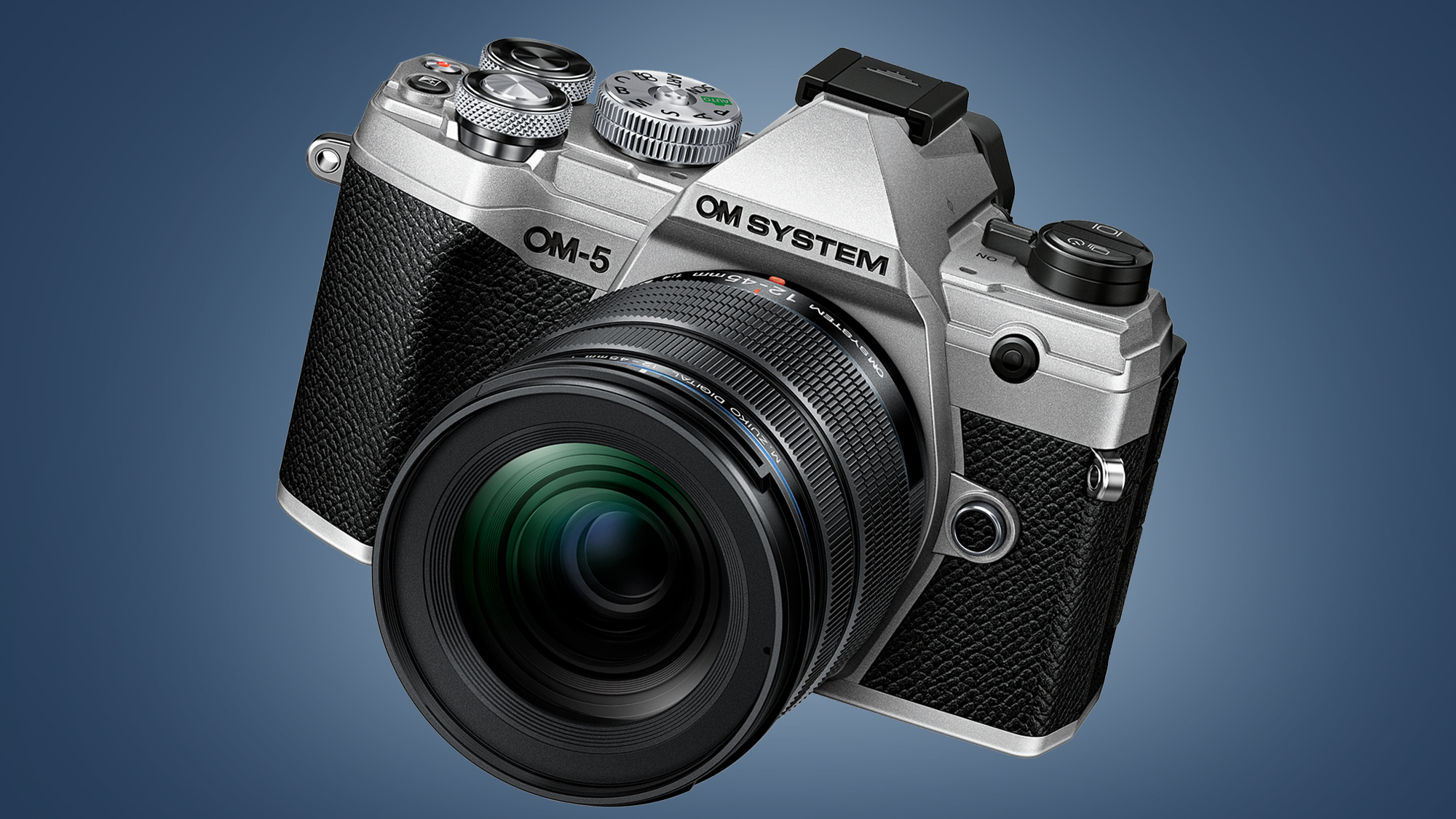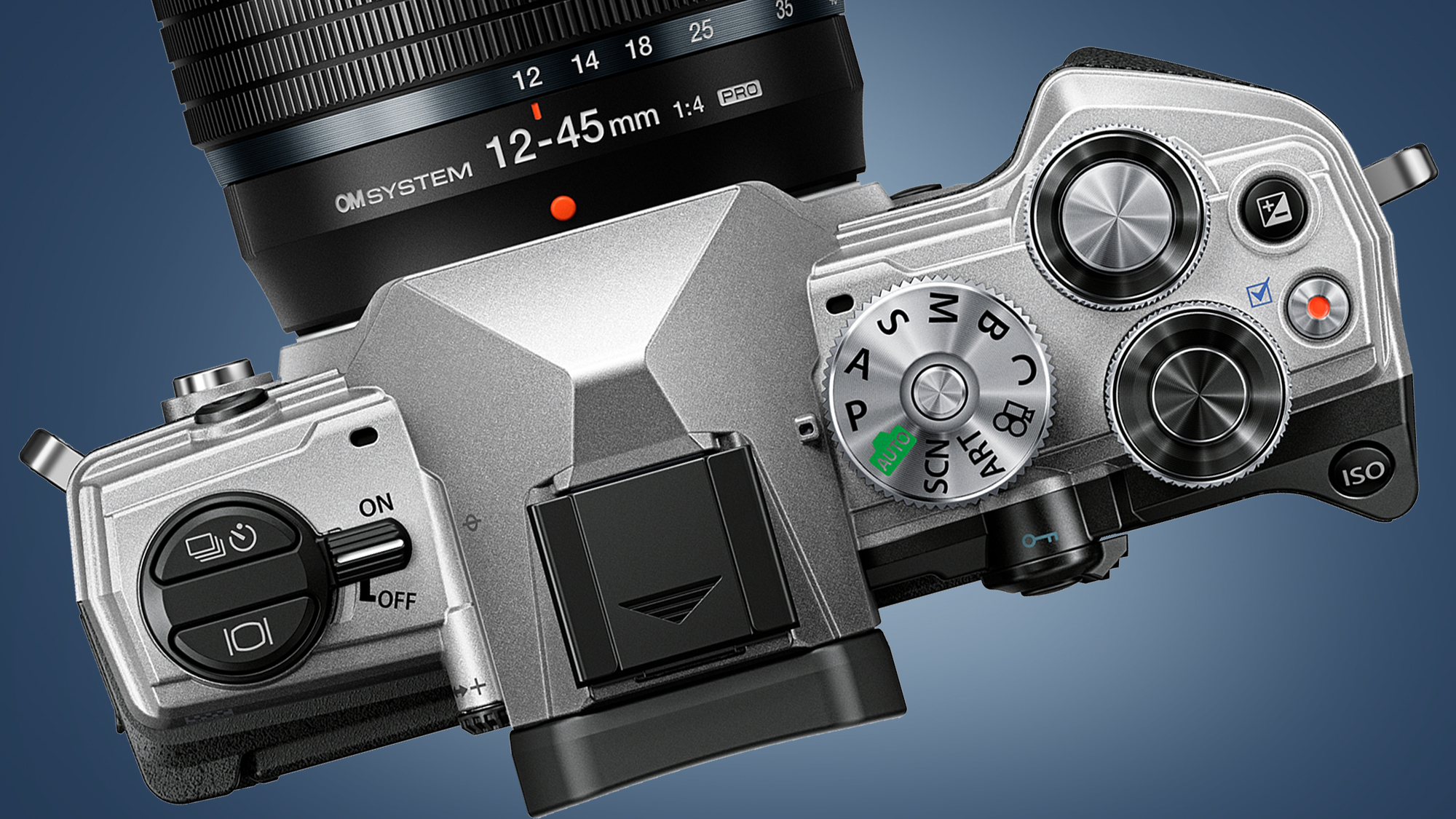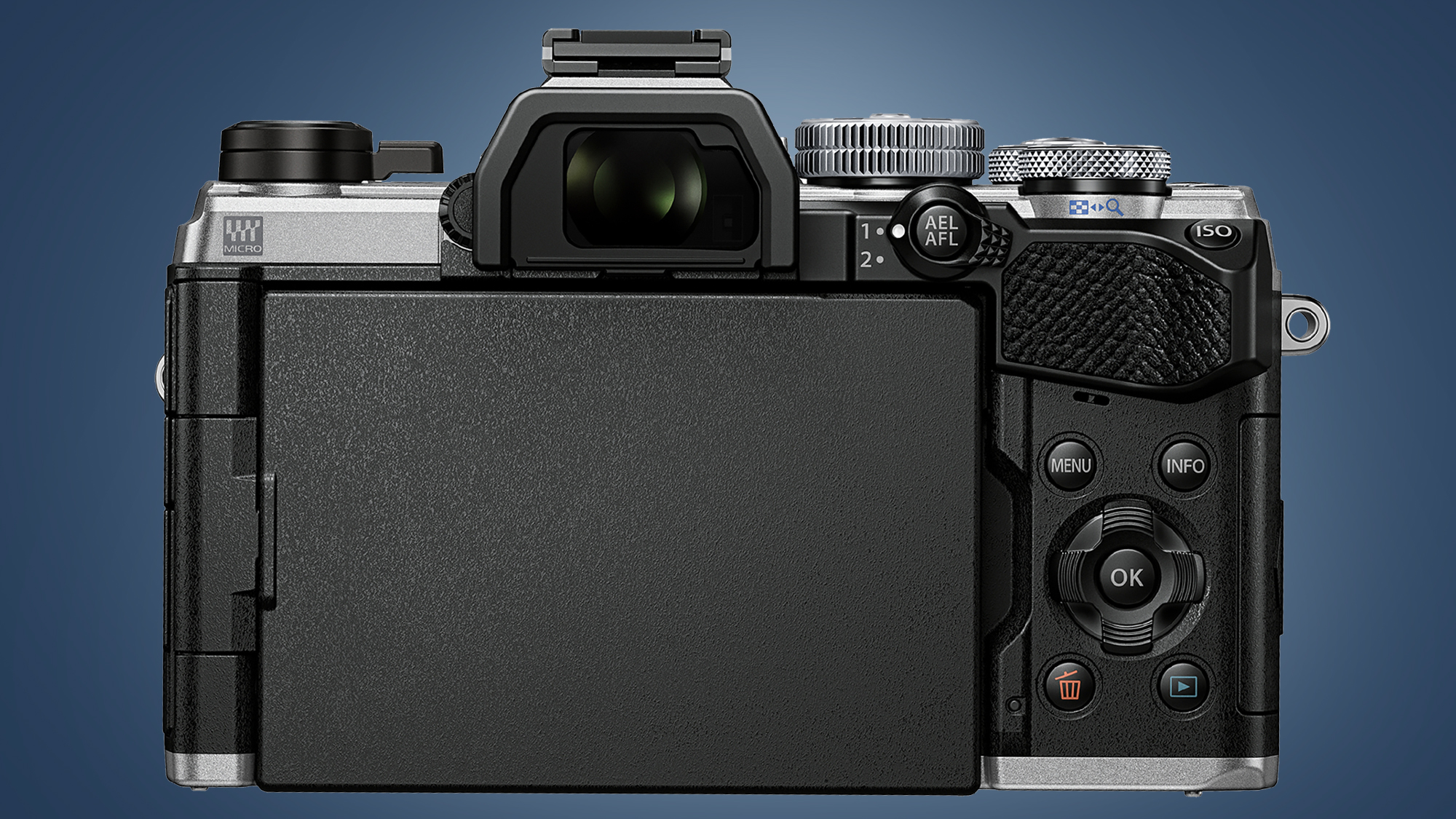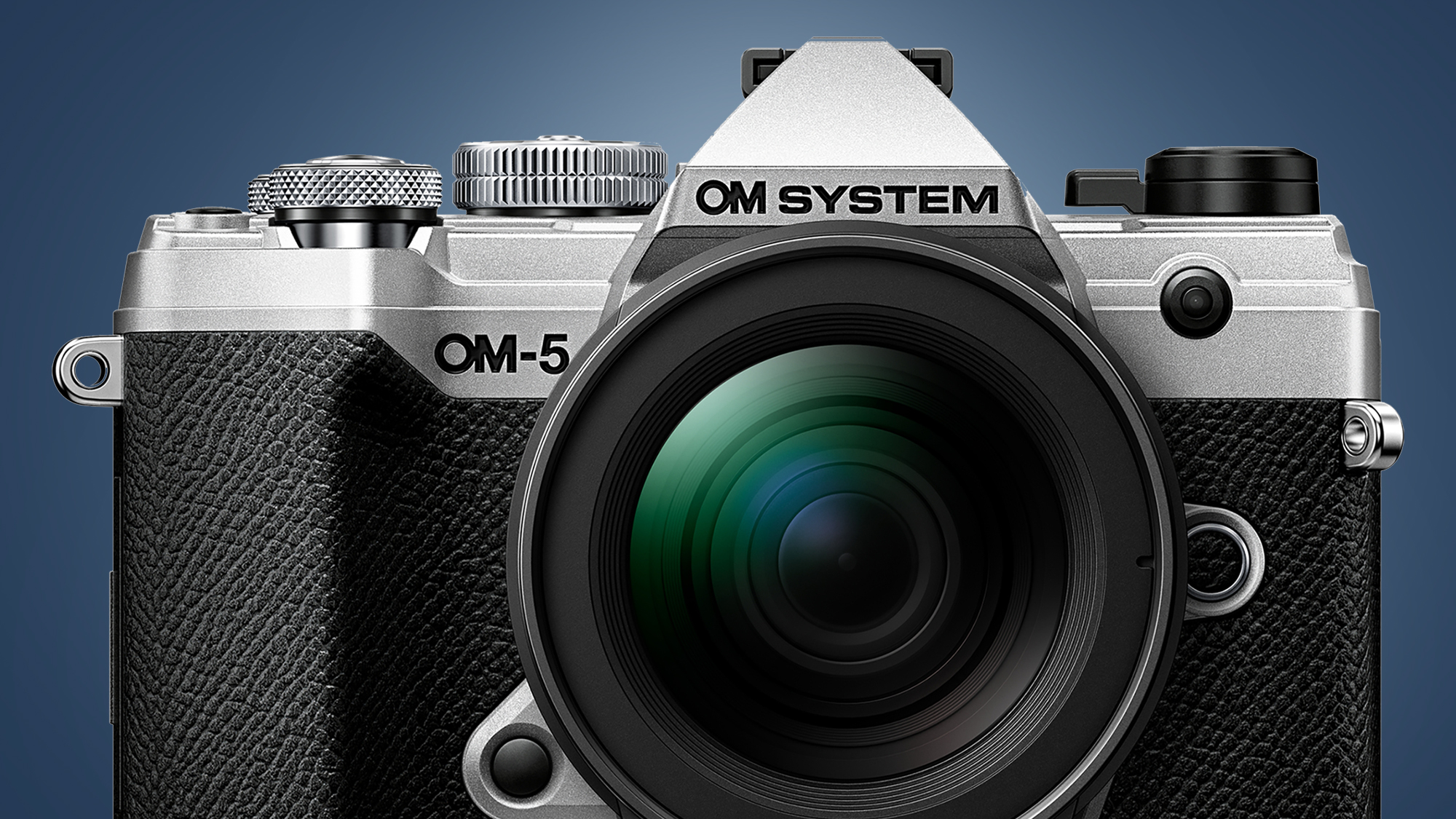The OM System OM-5 is the follow-up to one of Olympus' best cameras, the OM-D E-M5 Mark III from 2019. And this makes the new mid-ranger a strong contender for the title of best travel camera and best camera for beginners.
A compact, lightweight Micro Four Thirds camera, the OM-5 takes its predecessor's winning formula and improves on it in several areas. These include more powerful in-body image stabilization, IP53-rated weather resistance, and a host of computational photography features that were previously only found on the higher-end E-M1 series.
Sensor: 20.4MP Micro Four Thirds sensor
Processor: Truepic IX
Autofocus: 121-point Phase Detection AF
Burst shooting: 10fps with AF tracking (30fps electronic)
In-body stabilization: Yes (up to 7.5 stops)
Weatherproofing: IP53-rated
Video: 4K/30p, Full HD/120p
Weight: 366g (body only)
The OM-5 is also the first camera to bear the 'OM System' name. This new brand was born following the sale of Olympus' imaging division in 2020 – and while we've already seen the flagship OM System OM-1 arrive earlier this year, that camera bore the classic Olympus name for one last time.
So does the new OM-5 improve enough on its older predecessor to make it a strong rival to newer cameras like the Canon EOS R10 and Fujifilm X-S10? Or could the inclusion of an older 20.4MP Four Thirds sensor hold it back from greatness? Here's everything you need to know, including exactly how it compares with the E-M5 Mark III that it's based on.
OM System OM-5 release date and price
- Available to buy from late November
- The body-only price is $1,199 / £1,199 (around AU$2,115)
- Slightly more expensive than the Canon EOS R10 and Fujifilm X-S10
The OM System OM-5 will be available to buy in late November in a few different bundles.
You'll be able to buy the OM-5 body-only for $1,199 / £1,199 (around AU$2,115), or with a 12-45mm f/4.0 Pro kit lens for $1,599 / £1,499. In the UK and Europe, travel fans will also be able to buy the OM-5 with the 14-150mm f/4.0-5.6 II lens for the same price as the 12-45mm kit.

This pricing puts the OM System OM-5 in a similar ballpark to the Canon EOS R10 ($979 / £899 / AU$1,499, body only), which we consider to be the best beginner camera you can buy. Another close rival is the Fujifilm X-S10 ($999 / £949 / AU$1,699), which similarly has in-body image stabilization.
OM System OM-5 design and features
- Same 20.4MP Four Thirds sensor as the E-M5 Mark III
- Improved in-body image stabilization (up to 7.5 stops)
- IP53-rated weather-proofing and new computational modes
The OM System OM-5 is heavily based on the Olympus OM-D E-M5 Mark III, which has the same design and 20.4MP Four Thirds sensor. But there are lots of small improvements that collectively make the OM-5 a more modern mid-range camera for travel and everyday shooting.
Like the OM System OM-1, the OM-5 has official IP53-rated weatherproofing. What does that mean? The '5' in the rating means that any dust that enters the camera won't damage it, while the '3' signifies that it's protected against sprays of water. It isn't fully waterproof, then, but should handle pretty much any weather you throw at it, including extreme cold thanks to its freezeproofing.
Two other improvements on the OM-5's predecessor are a new Truepic IX processor, taken from the Olympus OM-D E-M1 Mark III, and improved in-body image stabilization. The latter will apparently give you an extra stop of stabilization compared to the E-M5, taking it up to 6.5 stops of compensation (or 7.5 with compatible lenses). The real-world benefit is slower handheld shutter speeds, which reduces the need for using a tripod.

While that processor can't manage the AI autofocus tricks seen on the OM System OM-1, which help it recognize and track animals and vehicles, it does unlock some useful computational photography modes that were previously been reserved for Olympus' flagship E-M1 line.
These include LiveND, which slows down your shutter speed by up to four stops to help you create long exposure effects without the need for fiddly filters, and Starry Sky AF for automatically locking focus onto stars. You also get a Handheld High Res Shot mode for taking 50MP snaps when shooting static scenes and the useful ProCapture, which gives you raw frames from both before and after you've pressed the shutter during critical moments.
That's all great for stills shooters, but what about video? The improvements from the E-M5 Mark III are more minor. The OM-5 still maxes out at 4K/30p video (or Full HD at 120p), but it does add a new vertical video option, unlimited record times, and a flat OM-Log400 profile for those who want to color grade and maximize dynamic range.
OM System OM-5 vs Olympus OM-D E-M5 Mark III: what's new?
If you own an OM-D E-M5 Mark III, or are thinking that it could well prove to be bargain now that the OM-5's on the scene, here's how the two cameras compare (see the table below).
Their outright image quality will be identical, because both cameras have the same 20.4MP Four Thirds sensor. But the OM-5 does bring quite a few quality-of-life upgrades that have been inherited from the E-M1 series.

The main ones are those useful computational photography modes, like LiveND (which albeit only offers up to ND16, rather than ND32) and Starry Skye AF. You also get some apparently improved autofocus for Face/Eye detection, and that boosted IP53 weatherproofing.
With an extra stop of in-body image stabilization compared to the E-M5, the OM-5 is also an even more powerful companion for handheld shooting. That said, its video features are very similar and it could be worth looking out for price drops on the E-M5 Mark III during the incoming Black Friday camera deals.
| OM System OM-5 | Olympus E-M5 Mark III | |
| Processor | Truepic IX | Truepic VIII |
| Weatherproofing | IP53 | IPX1 |
| IBIS | Up to 7.5 stops | Up to 6.5 stops |
| Autofocus | 121-point Phase Detection AF (improved Face/Eye detection) | 121-point Phase Detection AF |
| Computational modes | Handheld High Res Shot (50MP), LiveND, Starry Sky AF | High Res Shot (50MP) |
| Video | 4K/30p (vertical video mode, OM-Log400) | 4K/30p |
| Video record times | Unlimited | Up to 29 mins |
OM System OM-5 early verdict
While it isn't a radical improvement on the Olympus E-M5 Mark III, the OM System OM-5 brings enough new features to make it one of the best travel cameras around and also a potentially great first camera for a beginner.
The OM-5 is essentially an E-M5 crossed with an E-M1 series camera, thanks to that new Truepic IX processor. Considering the camera's compact size, 366g weight (without a lens) and IP53 weatherproofing, this should make it a lot of fun to shoot with during travel adventures and an upgrade on your smartphone.

You'll naturally have to budget for a lens or two, but this is another strength of the Micro Four Thirds system, which offers plenty of well-matched options like the f/4 Pro lineup or pancake primes for those who want super-compact setup.
We suspect the Canon EOS R10's powerful autofocus system will trump the OM-5, which lacks the OM-1's AI autofocus powers. And the Fujifilm X-S10 also offers in-body image stabilization and a larger sensor for less money than OM System's new mid-ranger. But on paper, the OM-5 still offers a unique set of features – and we'll be tossing it into our backpack for a full review very soon.
from TechRadar - All the latest technology news https://ift.tt/Xq1ISA4
Aucun commentaire: